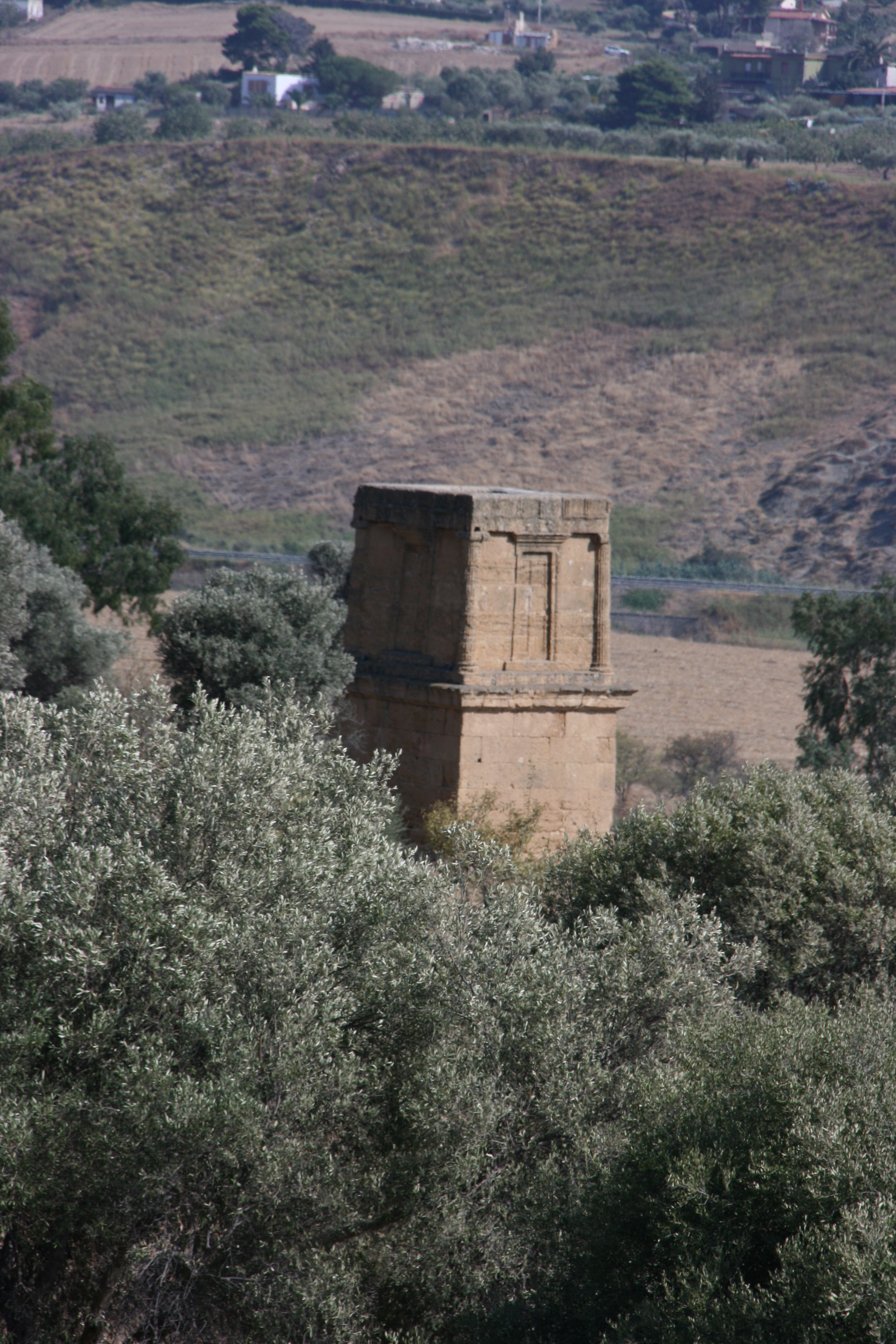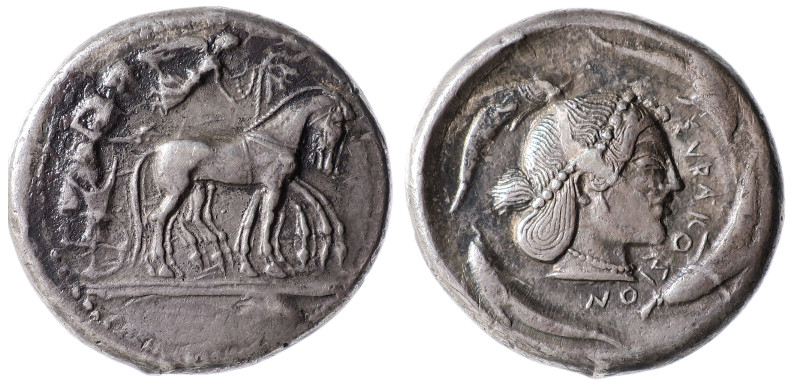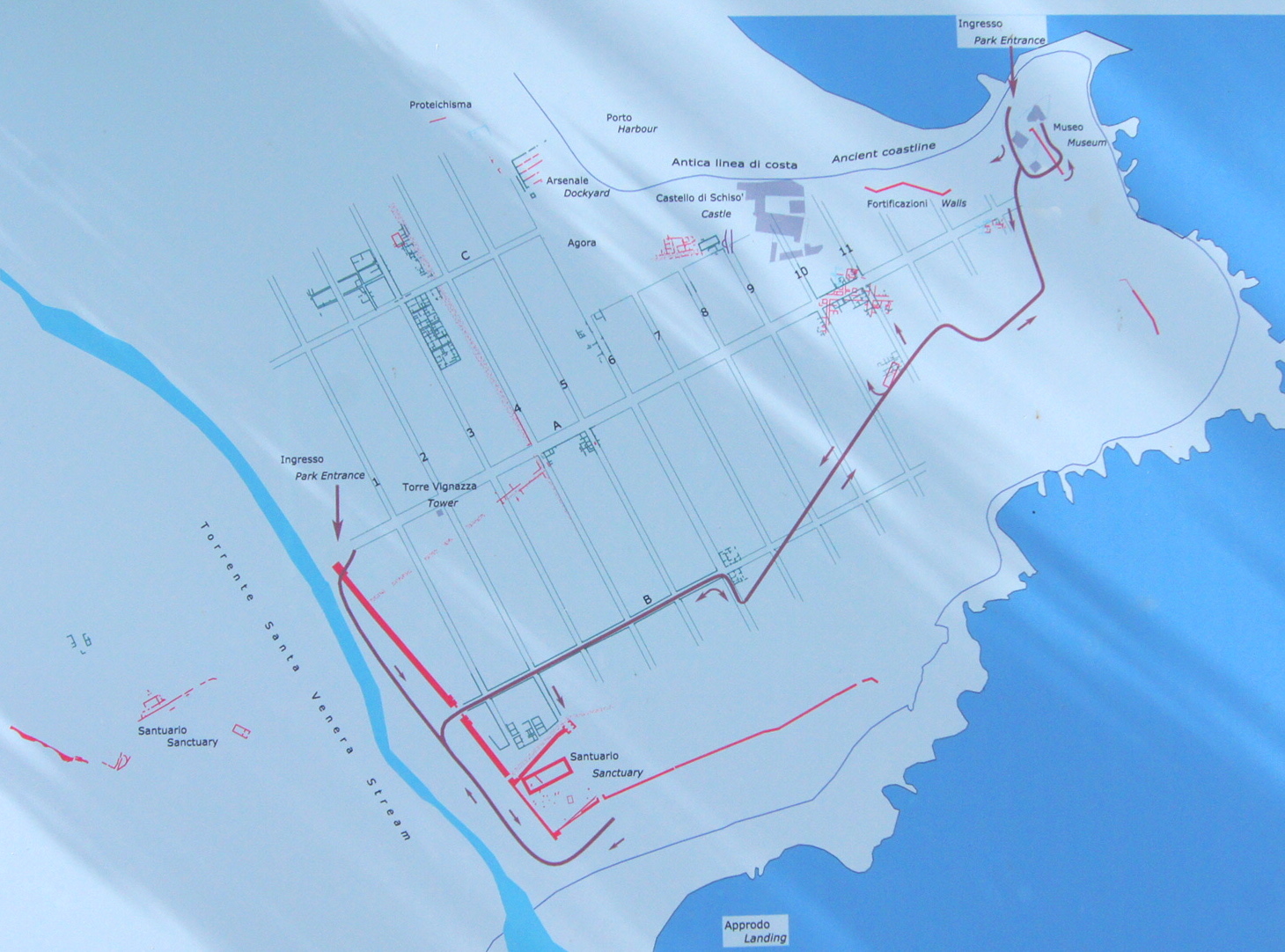|
Gelo
Gelon also known as Gelo (Greek: Γέλων ''Gelon'', ''gen.'': Γέλωνος; died 478 BC), son of Deinomenes, was a Greek tyrant of the Sicilian cities Gela and Syracuse, Sicily, and first of the Deinomenid rulers. Early life Gelon was the son of Deinomenes. According to Herodotus, Gelon's ancestors came from the island of Telos in the Aegean Sea and were the founders of the city of Gela in southern Sicily.De Sélincourt's ''Herodotus'', p. 494. One of his later ancestors, Telines, was said to have reconciled his people after a period of civil strife through the divine rites of the Earth Goddesses; Herodotus infers that all of Telines' descendants, including Gelon, were priests of this cult. Gelon's three brothers were Hieron, Thrasybulus and Polyzalos.Bury & Meiggs, p. 189. Deinomenes consulted an oracle about the fates of his children, and was told that Gelon, Hieron and Thrasybulus were all destined to become tyrants. Gelon fought in a number of the conflicts between ... [...More Info...] [...Related Items...] OR: [Wikipedia] [Google] [Baidu] |
Hiero I
Hiero I (; also Hieron ; ) was the son of Deinomenes, the brother of Gelon and tyrant of Syracuse in Sicily, from 478 to 467 BC. In succeeding Gelon, he conspired against a third brother, Polyzelos. Life During his reign, he greatly increased the power of Syracuse. He removed the inhabitants of Naxos and Catania to Leontini, peopled Catania (which he renamed Aetna) with Dorians, concluded an alliance with Theron, the tyrant of Acragas ( Agrigentum), and espoused the cause of the Locrians against Anaxilas, tyrant of Rhegium. His most important military achievement was the defeat of the Etruscans at the Battle of Cumae (474 BC), by which he saved the Greeks of Campania from Etruscan domination. A bronze helmet (now in the British Museum), with an inscription commemorating the event, was dedicated at Olympia. Hiero's reign was marked by the creation of what is believed to be the first secret police in Greek history, yet he was a liberal patron of literature and culture. The ... [...More Info...] [...Related Items...] OR: [Wikipedia] [Google] [Baidu] |
Gela
Gela (Sicilian and ; ) is a city and (municipality) in the regional autonomy, Autonomous Region of Sicily, Italy; in terms of area and population, it is the largest municipality on the southern coast of Sicily. Gela is part of the Province of Caltanissetta and is one of the few in Italy with a population and area that exceed those of Caltanissetta, the provincial capital.Gela was founded in 698 BC by Greek colonists from Rhodes and Crete; it was an influential ''polis'' of Magna Graecia in the 7th and 6th centuries BC and became one of the most powerful cities until the 5th c. BC. Aeschylus, the famous playwright, lived here and died in 456 BC. In 1943, during the Allied invasion of Sicily, Invasion of Sicily, the Allies of World War II, Allied forces made their first landing on the island at Gela.La Monte, John L. & Lewis, Winston B. ''The Sicilian Campaign, 10 July17 August 1943'' (1993) United States Government Printing Office pp.56-96 History Ancient era Archaeol ... [...More Info...] [...Related Items...] OR: [Wikipedia] [Google] [Baidu] |
Theron Of Acragas
Theron (, ''gen''.: Θήρωνος; died 473 BC), son of Aenesidemus, was a Greek tyrant of the town of Acragas in Sicily in Magna Graecia from 488 BC. According to Polyaenus, he came to power by using public funds allocated for the hire of private contractors meant to assist with a temple building project, to instead hire a personal group of bodyguards. With this force at his disposal, he was able to seize control of the town's government. He soon became an ally of Gelo, who at that time controlled Gela, and from 485 BC, Syracuse. Gelo later became Theron's son-in-law. Theron went to war with the city of Selinunte and the tyrant of Himera, Terillus. His kingdom covered a big part of Western Sicily, as a numismatic distribution study has brought afore. The latter, expelled from his city, therefore sought an alliance with Carthage through his son-in-law Anaxilas, tyrant of Rhegium. Theron occupied Himera but was then besieged in this city by a Carthaginian army, assisted by Teri ... [...More Info...] [...Related Items...] OR: [Wikipedia] [Google] [Baidu] |
Syracuse, Sicily
Syracuse ( ; ; ) is a historic city on the Italian island of Sicily, the capital of the Italian province of Syracuse. The city is notable for its rich Greek and Roman history, culture, amphitheatres, architecture, and as the birthplace and home of the pre-eminent mathematician and engineer Archimedes. This 2,700-year-old city played a key role in ancient times, when it was one of the major powers of the Mediterranean world. Syracuse is located in the southeast corner of the island of Sicily, next to the Gulf of Syracuse beside the Ionian Sea. It is situated in a drastic rise of land with depths being close to the city offshore although the city itself is generally not so hilly in comparison. The city was founded by Ancient Greek Corinthians and Teneans and became a very powerful city-state. Syracuse was allied with Sparta and Corinth and exerted influence over the entirety of Magna Graecia, of which it was the most important city. Described by Cicero as "the ... [...More Info...] [...Related Items...] OR: [Wikipedia] [Google] [Baidu] |
Syracuse, Italy
Syracuse ( ; ; ) is a historic city on the Italy, Italian island of Sicily, the capital of the Italian province of Syracuse. The city is notable for its rich Greek and Roman history, Greek culture, culture, amphitheatres, architecture, and as the birthplace and home of the pre-eminent mathematician and engineer Archimedes. This 2,700-year-old city played a key role in ancient times, when it was one of the major powers of the Mediterranean world. Syracuse is located in the southeast corner of the island of Sicily, next to the Gulf of Syracuse beside the Ionian Sea. It is situated in a drastic rise of land with depths being close to the city offshore although the city itself is generally not so hilly in comparison. The city was founded by Ancient Greece, Ancient Greek Ancient Corinth, Corinthians and Teneans and became a very powerful city-state. Syracuse was allied with History of Sparta, Sparta and Ancient Corinth, Corinth and exerted influence over the entirety of Magna ... [...More Info...] [...Related Items...] OR: [Wikipedia] [Google] [Baidu] |
Deinomenes
Deinomenes was the father of Hiero I of Syracuse, Hieron I, Gelo (or Gelon), Thrasybulus of Syracuse, Thrasyboulos, and Polyzelos.Pindar s:Pythian Ode 2, Pythian Ode 2 The historian Herodotus writes that his ancestors came from the island of Tilos, Telos in the Aegean Sea and were the founders of the city of Gela in southern Sicily, Magna Graecia. One of his ancestors, Telines, was made 'high priest of the gods who dwell below', a role which carried on through his descendants.Herodotus s:Histories /Book 7#153, 7.153 Deinomenes consulted the Delphic oracle about the fates of his children, and was told that Gelo, Hieron and Thrasyboulos were all destined, to their sorrow, to become tyrants. References Bibliography * * * 5th-century BC Greek people Ancient Geloans Year of birth unknown {{AncientGreece-bio-stub ... [...More Info...] [...Related Items...] OR: [Wikipedia] [Google] [Baidu] |
Agrigento
Agrigento (; or ) is a city on the southern coast of Sicily, Italy and capital of the province of Agrigento. Founded around 582 BC by Greek colonists from Gela, Agrigento, then known as Akragas, was one of the leading cities during the golden age of Ancient Greece. The city flourished under Theron's leadership in the 5th century BC, marked by ambitious public works and the construction of renowned temples. Despite periods of dormancy during the Punic Wars, Agrigento emerged as one of Sicily's largest cities in the Republican era. During the Principate, Agrigento's strategic port and diverse economic ventures, including sulfur mining, trade and agriculture, sustained its importance throughout the high and late Empire. Economic prosperity persisted in the 3rd to 4th centuries AD, but excavations show decline in activity after the 7th century. Agrigento is also the place of birth to several notable personalities, among which it is worth to mention Empedocles (5th century BC), ... [...More Info...] [...Related Items...] OR: [Wikipedia] [Google] [Baidu] |
Hippocrates Of Gela
Hippocrates (; died 491 BC) was the second tyrant of Gela, Magna Graecia, and ruled from 498 BC to 491 BC. He was the brother of Cleander and succeeded him to the throne after his death in 498. With him, Gela began its expansion phase; Hippocrates aimed to conquer all of southeastern Sicily in order to build a great state with Gela as its capital. He formed an alliance with Agrigento and conquered Zancle, Camarina, Catana, Naxos and Leontini. He also managed to besiege Syracuse, but had to withdraw, due to Corinthian and Corcyran involvement in the war. During his government, his city became the most powerful and flourishing among the Greek colonies in Sicily. Hippocrates died in battle against the Sicels. He designated his sons, Euclides and Cleander, as his successors, but they were soon replaced by the commander of the cavalry, Gelo who became the new tyrant of Gela.Herodotus, ''The Histories''7.155/ref> References * , width=25% align=center, Preceded by: Cleande ... [...More Info...] [...Related Items...] OR: [Wikipedia] [Google] [Baidu] |
Naxos (Sicily)
Naxos or Naxus () was an ancient Greek city of Magna Graecia, presently situated in modern Giardini Naxos near Taormina on the east coast of Sicily. Much of the site has never been built on and parts have been excavated in recent years. Its remains are open to the public and an on-site museum contains many finds. Location The city occupied a low rocky headland, now called Cape Schisò, formed by an ancient lava flow, immediately to the north of the Acesines (modern Alcantara) stream. Name There can be little doubt that the name was derivedHellanicus FGrH 4 F82 from the origin of the first colonists from Naxos in Greece. This has become even more definite since 1977 when the marble ''cippus'' (or sacred stone) inscribed with a dedication to the goddess Enyo was found in the large sanctuary west of the Santa Venera river. The characters are written in the unique 7th c. BC script of Greek Naxos. History Foundation Ancient writers agree that Naxos was the most ancient ... [...More Info...] [...Related Items...] OR: [Wikipedia] [Google] [Baidu] |
Thrasybulus Of Syracuse
Thrasybulus () was a tyrant who ruled Syracuse, Magna Graecia, for eleven months during 466 and 465 BC. He was a member of the Deinomenid family and the brother of the previous tyrant Hiero, who seized power in Syracuse by convincing Gelon's son to give up his claim to the leadership of Syracuse. A few months later, members of the Deinomenid family overthrew him. However, the Deinomenid family was subsequently overthrown and a democracy was established in Syracuse.Aristotle's ''Politics'' 5.1312b Notes , width=25% align=center, Preceded by:Hieron I , width=25% align=center, Tyrant of Syracuse466 BC– 465 BC , width=25% align=center, Succeeded by:''democracy Democracy (from , ''dēmos'' 'people' and ''kratos'' 'rule') is a form of government in which political power is vested in the people or the population of a state. Under a minimalist definition of democracy, rulers are elected through competitiv ...'' position next held by Dionysius I in 405 BC , - {{s-end ... [...More Info...] [...Related Items...] OR: [Wikipedia] [Google] [Baidu] |
Xerxes I Of Persia
Xerxes I ( – August 465 BC), commonly known as Xerxes the Great, was a Persian ruler who served as the fourth King of Kings of the Achaemenid Empire, reigning from 486 BC until his assassination in 465 BC. He was the son of Darius the Great and Atossa, a daughter of Cyrus the Great. In Western history, Xerxes is best known for his invasion of Greece in 480 BC, which ended in Persian defeat. Xerxes was designated successor by Darius over his elder brother Artobazan and inherited a large, multi-ethnic empire upon his father's death. He consolidated his power by crushing revolts in Egypt and Babylon, and renewed his father's campaign to subjugate Greece and punish Athens and its allies for their interference in the Ionian Revolt. In 480 BC, Xerxes personally led a large army and crossed the Hellespont into Europe. He achieved victories at Thermopylae and Artemisium before capturing and razing Athens. His forces gained control of mainland Greece north of the Isthmus of Co ... [...More Info...] [...Related Items...] OR: [Wikipedia] [Google] [Baidu] |
Kamarina, Sicily
Kamarina or Camarina () was an ancient city on the southern coast of Sicily in Magna Graecia. The ruins of the site and an archaeological museum are located south of the modern town of Scoglitti, a (borough) of the (municipality) of Vittoria in the province of Ragusa. Geography The city of Camarina was located 112 km west of Syracuse, between the rivers Hipparis and Oanis and on the south bank of Hipparis which also acted as a moat for the city. It had two harbours at the river mouths but not big enough to accommodate a large fleet and ships had to be beached on the shore. The land north of the river originally contained marshes, which would have caused difficulty for invaders. History It was founded in Magna Graecia by Syracuse in 599 BC, but after it rebelled against its mother city with the aid of the Sicels, it was sacked in 552 BC, rejoining the Syracuse domain. Camarina rebelled again in 492 BC and Hippocrates of Gela (498-491 BC) intervened to wage w ... [...More Info...] [...Related Items...] OR: [Wikipedia] [Google] [Baidu] |








